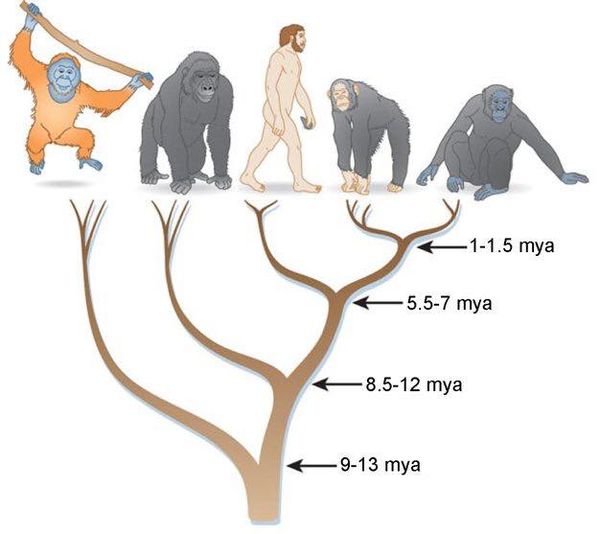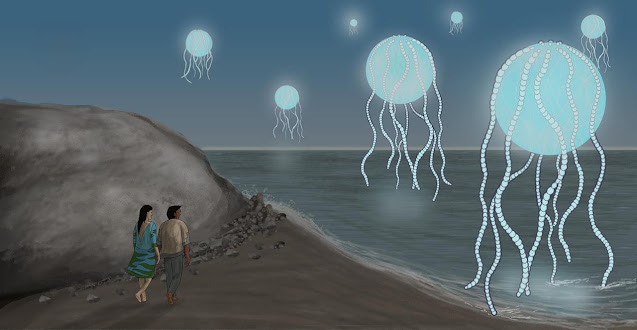From Atoms to Animals (Part 6) - Primates To People
An order of tree-dwelling mammals known as primates first evolved 85-55 million years ago. Today primates include lemurs, baboons, monkeys and apes. All of these modern primates evolved from earlier primates over millions of years. This includes humans, who are part of the ape family.
Fossils show that there were many primate species arising during this time, and although we can see similarities between some of these species and later ones, it is not possible to clearly identify which ones are directly descended from the others. Plesiadapis is one of the oldest primate fossils from around 58 million years ago, having much in common with modern tree-dwelling tarsiers and squirrels. It had a relatively large cranium compared to other mammals of its time. This, or a related species, may be the ancestor of modern apes.
About seven million years ago there was a common ancestor of chimpanzees and humans. We cannot be certain of the exact species of this animal, though there are a few good candidates in the fossil record such as Sahelanthropus tchadensis . The descendants of this primate diverged at this point, some going on to evolve into chimpanzees and others starting the path towards modern humans. Today, chimps are still our closest genetic cousins.
Around two million years ago we see Australopithecus, a larger primate which is part of the hominin group (which includes chimpanzees and humans), widespread throughout eastern and southern Africa. They were around four feet tall with a cranial volume of 466 cubic centimetres (more than that of modern chimpanzess: 360 cc).
Tracing the evolution of humans from early primates we see various adaptations, including the change from walking on all fours to walking upright (with the benefit of being able to see farther), but the most significant change is the gradual increase in the cranial volume.
As the size of the cranium increases, so does the brain within, with a likely increase in general intelligence. Any of *those offspring who are born with an even larger skull will have an even greater advantage still, and their offspring will predominate over the next generation. Multiply this process many times and again we have the evolution of a new species.
Later Homo habilis (“handy man”) arose 2.3-1.65 million years ago, similar to Australopithecus but with a significantly larger cranial volume of 500-900cc. This species was the first known to use stone tools.
Homo erectus (“upright man”) two million years ago walked upright and had a cranial volume of up to 1000cc (a modern human has 1300-1500cc). This species had a flat face and a low, flat skull. Archaeological evidence shows that they used stone tools, and there is evidence that they also used fire, made small stone dwellings and created art.
Homo heidelbergensis (‘Heidelberg Man’) emerged around 700,000 years ago. This species had a much more human-looking face and a brain up to 1390cc. They hunted various different animals using spears.
Homo sapiens (‘Wise Man’) came on the scene 300,000 years ago. Compared to humans today they had thicker skulls, a prominent brow ridge and a less defined chin. These differences gradually disappeared over time.
Human evolution is often depicted as a simple, straight line from early primates to modern people, but this is an oversimplification. When homo sapiens emerged there were other human species around at the same time, including Homo neanderthalensis – the Neanderthals – with whom homo sapiens interbred. Up to 4% of the DNA of modern humans not of African descent is from Neanderthals.


Comments
Post a Comment